This article was co-authored by Alexandra Janelli. Alexandra Janelli is a Certified Hypnotherapist, Anxiety & Stress Management Coach, and owner and founder of Modrn Sanctuary, a holistic health and wellness facility in Philadelphia, Pennsylvania. With over 10 years of experience, Alexandra specializes in helping clients push through their roadblocks to achieve their goals using her hypnotherapeutic approach. Alexandra holds a BS from the University of Miami. She graduated from the Hypnosis Motivation Institute with an Advanced Training Graduate Diploma in Hypnotherapy and Handwriting Analysis. Alexandra is also a Certified Life Coach from the iPEC Coach Training Program. She has worked with Academy Award Nominee Actors, world-renowned photographers, singers, top-level executives, and professionals across many sectors of business. Alexandra has been featured on MTV, Elle Magazine, Oprah Magazine, Men's Fitness, Swell City Guide, Dossier Journal, The New Yorker, and Time Out Chicago.
There are 13 references cited in this article, which can be found at the bottom of the page.
This article has been viewed 298,382 times.
Whether you suffer from insomnia or are just feeling overwhelmed with the stress of day-to-day life, falling asleep may not be as simple as lying down and closing your eyes. Too many distractions and stressful thoughts can interfere with your ability to give your body the rest it needs. Hypnosis can help you disengage from distracting thoughts, and it can be done with a professional or alone in your home. Most experts recommend a combination of relaxation, focus of attention, suggestion, and imagery to achieve a state of hypnosis.[1]
The following guide will walk you through these steps and offer additional lifestyle tips to help you relax and transition into a soothing sleep state.
This article is based on an interview with our certified hypnotherapist, anxiety and stress management coach, Alexandra Janelli, owner and founder of Modrn Sanctuary. Check out the full interview here.
Steps
Calming Your Mind
-
1Get comfortable. Before you can begin to fall asleep, you need to be comfortable so your mind will not be on your immediate environment. As you get ready for bed, wear loose-fitting, comfortable clothes. Tight-fitting or constricting articles of clothing may distract you or cause discomfort. Next, find a comfortable spot. If you are not quite ready to go to bed yet, find a comfortable position such as sitting cross-legged on a couch cushion. If you are lying in bed, lie in whatever position you feel most comfortable.
- You need to ensure that you find the position that feels most relaxing. It is the first step toward mind and body relaxation.[2]
-
2Ready your environment. Your body is most prepared to sleep when it is dark. This is because the natural sleep hormone, melatonin, is produced when you are in the dark. As you are getting ready for bed, turn off any bright lights. Try to avoid distractions like TVs, handheld devices, phones, or computer screens.
- This not only helps with melatonin production, it also helps relax your eyes and your brain.[3]
Advertisement -
3Do relaxing activities before bed. One of the best ways to clear your mind and get ready to sleep is by doing a relaxing activity before bed. These activities include reading, meditating, or doing word puzzles. These activities help harness your mind and relax your worries about the day. You can focus instead of the characters in your book or the answer to the next crossword clue.
- Try to avoid watching too much TV before bed. It can overstimulate you and play around with your melatonin levels.[4]
- Studies have shown that engaging in relaxing activities before bed, such as concentrated breathing, can help combat those anxious thoughts.
Falling Asleep with Self-Hypnosis
-
1Let your thoughts drift away. You can help put yourself to sleep with self-hypnosis. This is a method where you focus on yourself, your breathing, and your internal thought processes in order to lull yourself to sleep. To start, try to relax your body, but don't worry about trying to turn off your mind. Let your thoughts drift by like they're on a conveyor belt—acknowledge them, then let them pass.[5]
- Often the things that come to mind at night seem so much bigger and more worrisome. This phase of sleep is called the thinking phase. It is the point in your sleep cycle where you focus on rehashing everything that happened to you throughout the day or spend too much time thinking about things to come.
- If you have a hard time letting go of your thoughts, focus more on relaxing each part of your body. The relaxation will come eventually.[6]
-
2Release tension in your body. Start with your toes and move your way up to the top of your head. Move or flex each toe so you’re aware of the way they feel when active. Now relax your toes and release any tension you feel. Make your toes and feet go limp without any pressure or energy exerted.
- Continue this routine for the rest of your body, tensing then releasing the tension in every muscle throughout your body. Move all the way up your body, focusing on the feet, ankles, lower legs, knees, upper legs, hips, back, front, shoulders, fingers, hands, lower arms, elbows, upper arms, neck, back of the head, jaw, face, mouth, eyes, and ears.[7]
- This is called progressive relaxation, and it helps you get into a more subconscious, relaxed state.[8]
-
3Breathe deeply. Once your body is relaxed, you can start your breathing exercises. Make sure your eyes are closed. Draw in long, deep inhalations. Exhale slowly and feel the air as it leaves your lungs. Concentrate on your chest and the way the breaths feel leaving your body. Let your mind concentrate fully on your breath as the air comes slowly into and out of your body.
- Open your mouth and relax your jaw muscles. Don't force your breathing. Just allow your breathing to continue easily, effortlessly, and comfortably.
- Feel your body relax into the mattress as the air flows in and out with each breath. The effects of hypnosis should feel similar to deep meditation, which is a sense of removal from the physical body, a distortion of time, and an overwhelming sense of euphoria.[9]
-
4Visualize a relaxing place. Once you have relaxed your body and gotten your breathing under control, you need to start the fantasy phase of sleep. To do this, think about the most relaxing place or scenario you can think of. This can be a beach in the middle of summer, a golf course on a beautiful day, a cozy fire in the mountains, or a hammock on the back porch of your childhood home. Immerse yourself in your relaxing place, focusing all your attention it.
- Make yourself remember what it feels, smells, or sounds like. The more elaborate your picture, the more relaxed you will become. Make up scenarios of what you are doing there, filling in other people that might be there, what food you might eat, what sounds you might hear, or any other atmospheric concern with the location.[10]
- It can also help to mentally go through a sequence of events, like imagining what you did during the day or picturing the steps you follow when you're brushing your teeth.[11]
- Studies have found that focusing on an image in the brain decreases beta waves and increases alpha and theta waves, resulting in feelings of relaxation and drowsiness.[12]
-
5Choose a mantra. If you find it hard to visualize a certain place, you can instead create an inner mantra to help you fall asleep. Try soothing phrases such as restful, peaceful, sleep or beautiful, restful, deep, sleep. Say the mantra on every exhale, focusing your attention on the meaning of the words.
- Relaxation and suggestion have been shown to control activity in highly localized regions of the brain, allowing you to effectively rewire your thought patterns. In this case, you reduce your stressful thoughts while you increase relaxing bedtime thoughts.[13]
- The human brain is incredibly susceptible to suggestion, and repeating an affirmative phrase can have a lasting impact on your subconscious.
-
6Make a hypnosis recording. If neither of these options work, try making a hypnosis tape for yourself. It can be difficult to remember all of these steps if you're just getting started, and pausing to look up what you missed could take you out of your relaxing moment. Record yourself speaking the guided meditation above. Try experimenting with different suggestions and images, making different recordings for different scenarios and mantras. Include your positive or affirmative phrases so you can hear them and remember to say them as you drift off.
- Listen to your tape while you try to sleep. Research suggests that listening to a recording that urges the listener to "sleep deeper" may improve restfulness and deep sleep.
-
7Practice. These activities, though they sound easy, will not work overnight. The relaxation techniques can take time getting used to, so don't worry if they don't work right away. You will get better at it over time. The more you think about your relaxing place, the more realistic it will become.
- After a while, you will likely find that you can fall asleep easier and sleep better every night.
- You can try the same techniques if you have problems with waking up in the middle of the night. They can help you fall back asleep just as easily as they can help you fall asleep at the beginning of the night.[14]
Following Good Habits for Sleep
-
1Avoid consuming caffeine, sugar, and alcohol. Caffeine is a stimulant that lingers in your body long after the food or drink has been enjoyed. Avoid drinks such as coffee, soda, and caffeinated tea if it is late in the afternoon or evening. Avoid eating chocolate or anything with caffeinated ingredients as well. Sugar is one way to keep you awake, so avoid eating that.
- Keep in mind that even decaffeinated drinks can still contain a small amount of caffeine.[15]
-
2Eat lighter and earlier. When your evening meal is filled with heavy foods, your digestive system will be working hard to process everything. Avoid eating large, protein-heavy foods late in the day. This will cause your body to need to digest things longer, since there is so much food.
- For best results, try not to eat anything within 1-2 hours of your bedtime.[16]
- If you're one who frequently needs to go to the bathroom, you should also decrease the amount of liquid you drink close to your bedtime.
-
3Understand how exercise affects your sleep. Exercising before bed is generally considered harmless on the sleep cycle. However, unless you know for certain how exercise affects your ability to sleep, it’s best to perform your workouts a few hours before going to bed. Avoid running, high intensity cardio, and other major exercises in the hours leading up to your bedtime.[17]
- If you plan to do evening exercises, make them more low impact, such as yoga or walking.
-
4Establish a set sleep time. Your body works on schedules and rhythms. If you find it hard to sleep at night, you should try to go to bed every night at the same or similar time. Having an established evening routine and going to bed around the same time each night can help your body and mind recognize that it’s time to get ready for sleep.
- This will be even more useful if you do a similar activity, such as reading or crossword puzzle, at the same time as well. It will act as a signal that you are getting ready to sleep.[18]
Expert Q&A
-
QuestionHow do you force yourself to stop thinking?
 Alexandra JanelliAlexandra Janelli is a Certified Hypnotherapist, Anxiety & Stress Management Coach, and owner and founder of Modrn Sanctuary, a holistic health and wellness facility in Philadelphia, Pennsylvania. With over 10 years of experience, Alexandra specializes in helping clients push through their roadblocks to achieve their goals using her hypnotherapeutic approach. Alexandra holds a BS from the University of Miami. She graduated from the Hypnosis Motivation Institute with an Advanced Training Graduate Diploma in Hypnotherapy and Handwriting Analysis. Alexandra is also a Certified Life Coach from the iPEC Coach Training Program. She has worked with Academy Award Nominee Actors, world-renowned photographers, singers, top-level executives, and professionals across many sectors of business. Alexandra has been featured on MTV, Elle Magazine, Oprah Magazine, Men's Fitness, Swell City Guide, Dossier Journal, The New Yorker, and Time Out Chicago.
Alexandra JanelliAlexandra Janelli is a Certified Hypnotherapist, Anxiety & Stress Management Coach, and owner and founder of Modrn Sanctuary, a holistic health and wellness facility in Philadelphia, Pennsylvania. With over 10 years of experience, Alexandra specializes in helping clients push through their roadblocks to achieve their goals using her hypnotherapeutic approach. Alexandra holds a BS from the University of Miami. She graduated from the Hypnosis Motivation Institute with an Advanced Training Graduate Diploma in Hypnotherapy and Handwriting Analysis. Alexandra is also a Certified Life Coach from the iPEC Coach Training Program. She has worked with Academy Award Nominee Actors, world-renowned photographers, singers, top-level executives, and professionals across many sectors of business. Alexandra has been featured on MTV, Elle Magazine, Oprah Magazine, Men's Fitness, Swell City Guide, Dossier Journal, The New Yorker, and Time Out Chicago.
Certified Hypnotherapist & Anxiety and Stress Management Coach Trying to push your thoughts down is like trying to keep a beach ball underwater—the more you fight it, the more they're going to try to float up. It's much more relaxing to just let them float away.
Trying to push your thoughts down is like trying to keep a beach ball underwater—the more you fight it, the more they're going to try to float up. It's much more relaxing to just let them float away.
References
- ↑ https://www.psychologytoday.com/blog/fulfillment-any-age/201207/the-how-tos-hypnosis
- ↑ http://www.uncommon-knowledge.co.uk/articles/uncommon-hypnosis/sleep-and-hypnosis.html
- ↑ http://www.uncommon-knowledge.co.uk/articles/uncommon-hypnosis/sleep-and-hypnosis.html
- ↑ http://www.uncommon-knowledge.co.uk/articles/uncommon-hypnosis/sleep-and-hypnosis.html
- ↑ Alexandra Janelli. Certified Hypnotherapist & Anxiety and Stress Management Coach. Expert Interview. 27 August 2020.
- ↑ https://hypnosis.edu/articles/insomnia
- ↑ https://hypnosis.edu/articles/insomnia
- ↑ Alexandra Janelli. Certified Hypnotherapist & Anxiety and Stress Management Coach. Expert Interview. 27 August 2020.
- ↑ https://www.psychologytoday.com/blog/hypnosis-the-power-trance/200907/what-does-hypnosis-really-feel
- ↑ https://hypnosis.edu/articles/insomnia
- ↑ Alexandra Janelli. Certified Hypnotherapist & Anxiety and Stress Management Coach. Expert Interview. 27 August 2020.
- ↑ http://www.ishhypnosis.org/media/public-information/
- ↑ http://www.scientificamerican.com/article/scans-show-how-hypnosis-a/
- ↑ http://www.nhs.uk/Livewell/insomnia/Pages/hypnosis.aspx
- ↑ http://sleepfoundation.org/ask-the-expert/sleep-hygiene
- ↑ http://sleepfoundation.org/bedroom/taste.php
- ↑ http://www.cnn.com/2014/04/22/health/upwave-night-exercise/
- ↑ http://www.nia.nih.gov/health/publication/good-nights-sleep
- ↑ http://pubs.niaaa.nih.gov/publications/arh25-2/101-109.htm
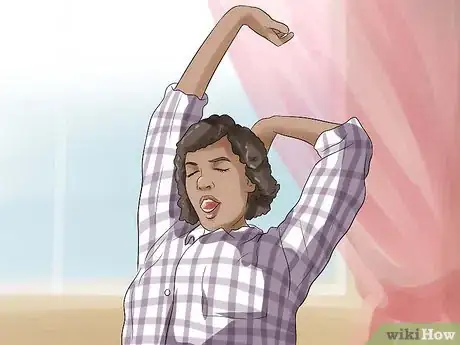
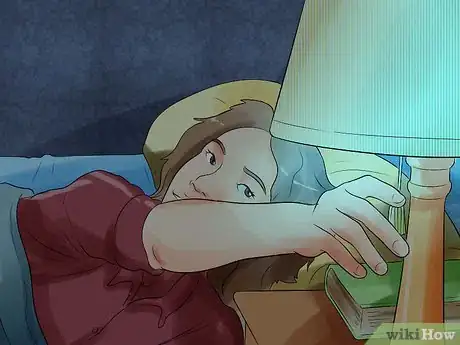
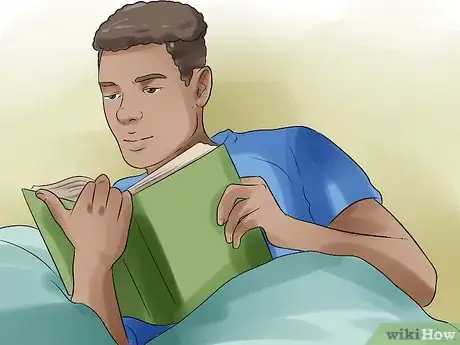


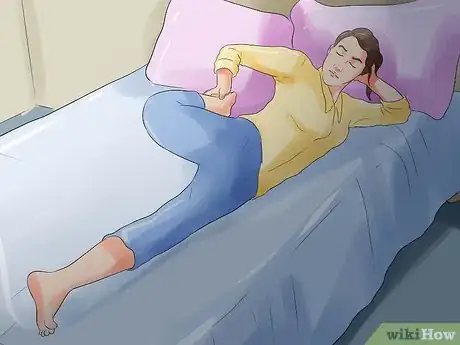



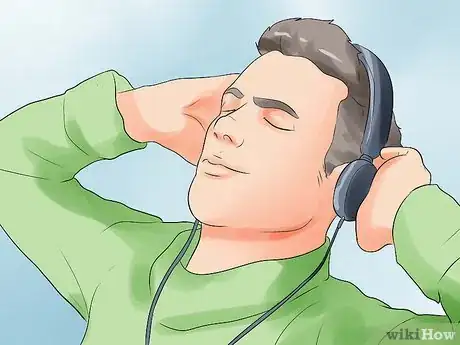
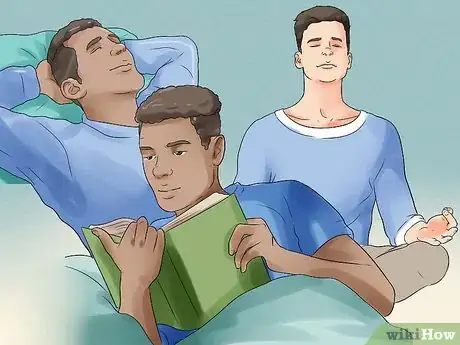
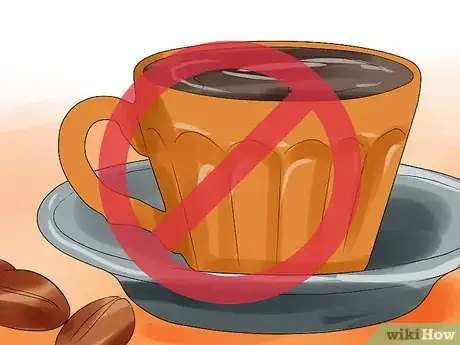


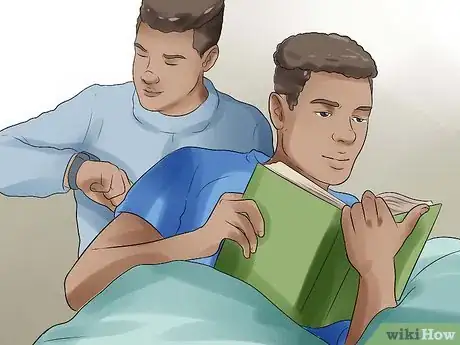


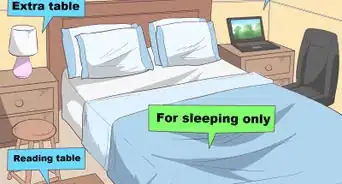


















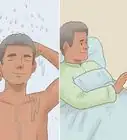
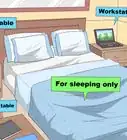




































Medical Disclaimer
The content of this article is not intended to be a substitute for professional medical advice, examination, diagnosis, or treatment. You should always contact your doctor or other qualified healthcare professional before starting, changing, or stopping any kind of health treatment.
Read More...